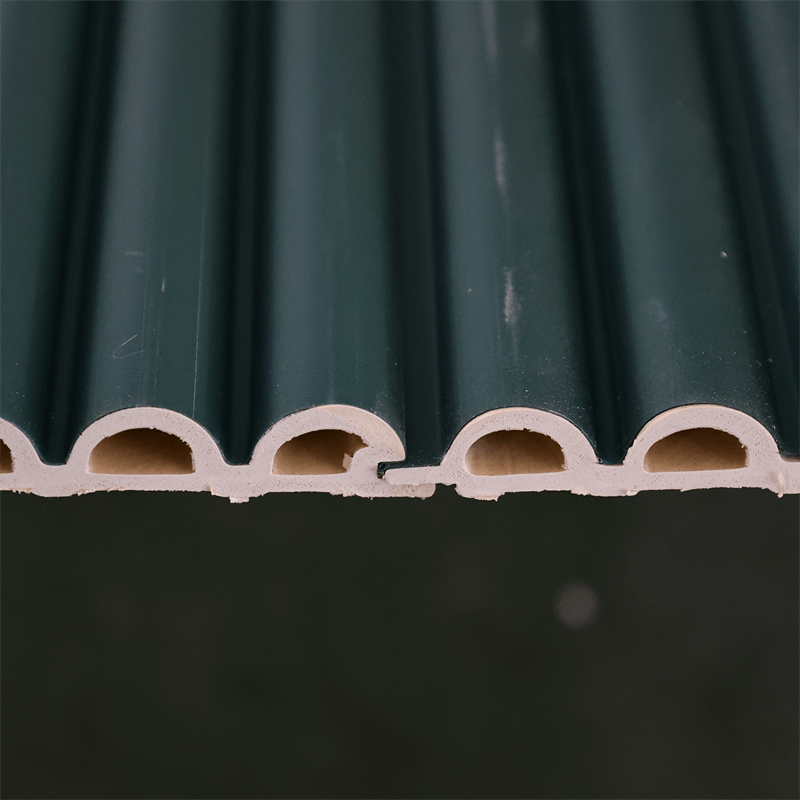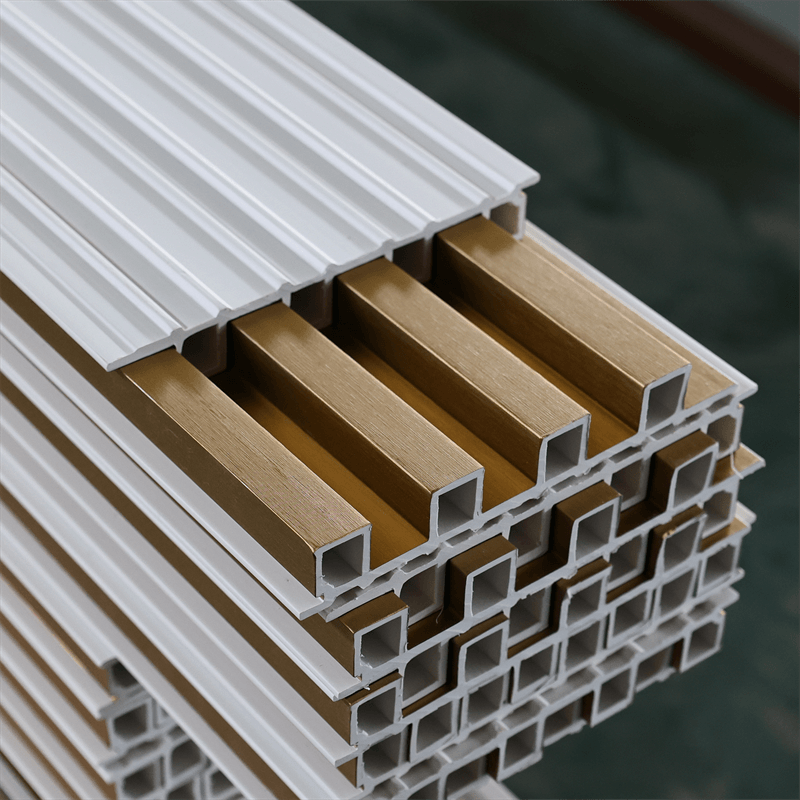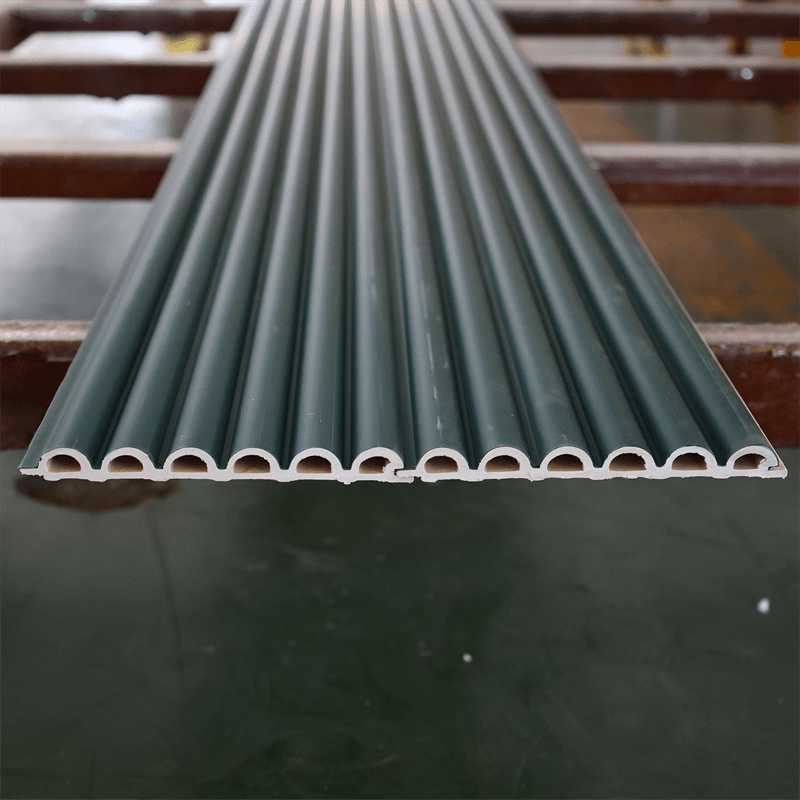Modern architecture is characterized by innovative design concepts and the use of advanced building materials.
Wood-Plastic Composite (WPC) wall panels have emerged as a versatile solution, offering numerous benefits in contemporary architectural projects.
This essay explores the versatility of WPC wall panels in modern architecture, focusing on their adaptability, design flexibility, sustainable attributes, and integration with technology.
I. Adaptability in Various Architectural Styles:
WPC wall panels demonstrate remarkable adaptability, allowing architects to incorporate them into a wide range of architectural styles.
This section highlights the adaptability of WPC panels in modern architecture:
- Contemporary Design: With their sleek and clean lines, WPC wall panels complement contemporary architectural styles. Their modern aesthetic enhances the overall design, providing a visually appealing and cohesive look to the building facade. The availability of various colors, finishes, and patterns allows architects to create unique and cutting-edge designs.
- Traditional Architecture: WPC panels can also seamlessly integrate into traditional architectural styles, replicating the appearance of natural wood. The panels can be customized to mimic the texture, color, and grain patterns of traditional materials, providing a classic and timeless appeal. This versatility allows for the preservation of architectural heritage while incorporating the benefits of modern materials.
- Futuristic Designs: In avant-garde architectural projects, WPC wall panels can be used to create futuristic and unconventional facades. Their adaptability to complex shapes and curves enables architects to push the boundaries of design, creating visually striking structures that stand out in the urban landscape.
II. Design Flexibility and Customization:
WPC wall panels offer architects unparalleled design flexibility, allowing for creative and customized solutions.
This section explores the design advantages of WPC panels:
- Versatile Panel Sizes: WPC panels are available in various sizes, enabling architects to design facades with different proportions and scales. This flexibility allows for the creation of unique architectural compositions, adding visual interest and depth to the building exterior.
- Patterns and Textures: WPC panels can be manufactured with different surface textures and patterns, ranging from smooth finishes to embossed designs. This versatility allows architects to incorporate texture into their designs, adding tactile and visual richness to the building facade.
- Integration with Other Materials: WPC wall panels can be combined with other materials, such as glass, metal, or stone, to create visually captivating facades. The integration of different materials adds complexity and sophistication to the design, contributing to the overall aesthetic appeal of the architectural composition.
III. Sustainable Attributes:
Sustainability is a key consideration in modern architecture, and WPC wall panels align with sustainable design principles.
This section discusses the sustainable attributes of WPC panels:
- Use of Recycled Materials: Many WPC panels incorporate recycled materials, such as post-consumer plastics and wood waste. By utilizing these recycled components, WPC panels reduce waste and minimize the demand for virgin materials. This recycling process contributes to a circular economy and supports sustainable resource management.
- Reduced Environmental Impact: The production of WPC wall panels has a lower environmental impact compared to traditional materials. The manufacturing process consumes less energy and generates fewer greenhouse gas emissions. Additionally, the durability of WPC panels reduces the need for frequent replacements, further minimizing material waste and resource consumption.
- Longevity and Durability: WPC wall panels are renowned for their durability, ensuring the longevity of architectural structures. Their resistance to moisture, rot, and pests contributes to the long-term preservation of the building envelope. The extended lifespan of WPC panels reduces maintenance needs and replacement costs, making them a sustainable choice for modern architecture.
IV. Integration with Technology:
WPC wall panels can be integrated with technological advancements, enhancing the functionality and performance of modern architectural projects.
This section explores the integration of technology with WPC panels:
- Energy Efficiency: WPC panels can be designed with built-in insulation properties, contributing to improved energy efficiency in buildings. The insulation properties of WPC panels help regulate indoor temperature, reducing the reliance on heating and cooling systems and minimizing energy consumption.
- Smart Building Solutions: WPC panels can be equipped with smart technology, such as sensors and embedded electronics, to create intelligent building facades. These smart solutions can monitor environmental conditions, adjust lighting levels, or provide interactive features, enhancing the user experience and optimizing building performance.
- Renewable Energy Integration: WPC panels can also accommodate the integration of renewable energy systems, such as solar panels or wind turbines. The seamless integration of these technologies into the WPC panels allows architects to create self-sustaining and energy-efficient buildings, promoting sustainable practices in modern architecture.

The versatility of WPC wall panels in modern architecture is evident in their adaptability to various styles, design flexibility, sustainable attributes, and integration with technology.
Architects can leverage the unique properties of WPC panels to create visually stunning facades that align with contemporary design principles.
The adaptability of WPC panels allows for the realization of diverse architectural concepts, from contemporary to traditional and even futuristic designs.
Furthermore, their sustainability features and integration with technology contribute to the creation of environmentally friendly and technologically advanced buildings.
As modern architecture continues to evolve, WPC wall panels will play a pivotal role in shaping the future of architectural design, enabling innovative and sustainable solutions.


